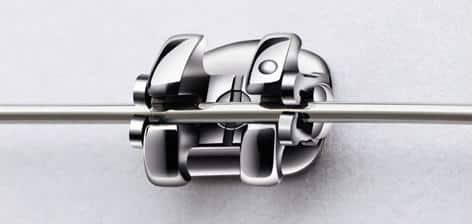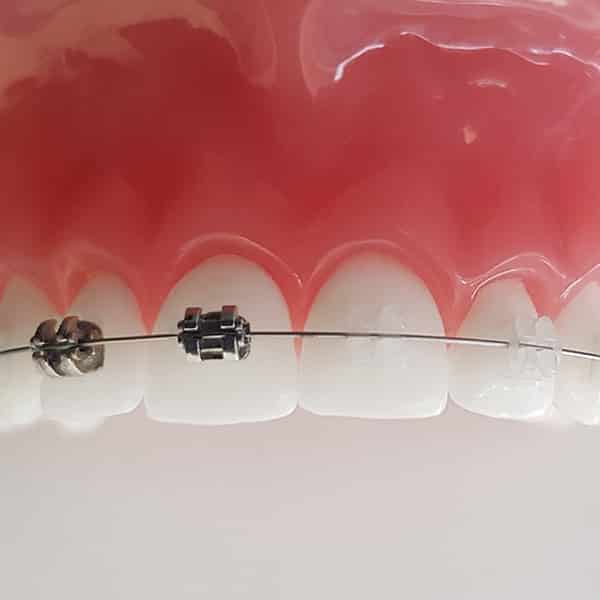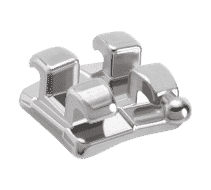Informations for patients

Information about the medical and legal necessity of functional diagnostics.
Dear patients and parents!
The diagnosis of the Temporomandibular joint, or the masticatory organ, before orthodontic treatment is essential for medical, legal and forensic reasons.
The Temporomandibular joint is the growth centre of the lower jaw. The professional treatment of the teeth, or jaw malocclusion may depends on the information that we can obtain from the placement and condition of the Temporomandibular joints and muscles.
For this reason, the German Society of Dental and Oral Medicine (DGZMK), as well as the German Society for Functional Diagnostics recommends a functional diagnosis before any orthodontic treatment is essential to be carried out, even on children and young patients.
( Refer to the ” Dental Releases ” 7/03 and on our website ) .
An omission of this procedure can lead to nonconforming treatments that can negatively change the Temporomandibular joint and lead to force the position of the lower jaw, which can potentially result in Temporomandibular joint/neck pain and a limited opening of the mouth, causing Migraines.
From a legal standpoint, every Dentist is obliged to carry out a functional diagnostic and analytical procedures before any occlusal position is changed.
Fellow dentists who did not carry out this diagnosis, whether it be from lack of knowledge on this matter or because patients were not willing to pay for the analysis have been sentenced for damages (Schleswig- Holsteinisches Oberlandesgericht 4U145/91 und Landgericht Lübeck 30129/90, LG Braunschweig 2S 916/00)
If an agent of your health insurance company has given you information to state otherwise, this can only be based on lack of knowledge on this topic. Please provide in this case a written statement to a competent employee of your health insurance company who is familiar with this complex subject or refer them to our statement here so he can make contact with us directly.
For any other questions we are sincerely at your disposal.
Your Clinic, Dres. Sabbagh/Wirth
Self-Ligating Braces (No Rubber bands)
Standard braces use rubber bands to hold the wire onto your braces. Advancements in technology now bring self-ligating braces onto the scene. Instead of rubber bands, 3M™ Self-Ligating Braces use a unique clip or movable door to hold the wire in place. Which braces you choose is between you and your orthodontist, based on your treatment needs and aesthetic preferences. With 3M Self-Ligating Braces, your teeth can stay cleaner and you can spend less time in your orthodontist’s chair.
SmartClip™ SL3 Self-Ligating Braces
The SmartClip™ Self-Ligating Braces technology eliminates the need for rubber bands. Instead, an innovative clip system does the trick. That’s a big change for the better when it comes to your smile.
Small SmartClip braces move teeth more quickly
Smooth, contoured surfaces offer a more comfortable fit
Self-ligating design keeps orthodontist appointments to a minimum
Without rubber bands, braces are easier to keep clean.


Ceramic Braces (Clear)
Tooth-colored, non-allergenic aesthetic brackets of the latest generation are visually hardly noticeable and better in quality than plastic brackets because they are more precise, more stable and color-resistant.
Mini Braces
These smaller brackets are particularly suitable for patients who play wind instruments.

FAQ
Does the health insurance cover the treatment costs?
If the treatment report finds a classification of at least KIG 3 (Orthodontic treatment indication groups), there is an entitlement to benefits in the form of a basic service. From the age of 18 onwards, a reimbursement is given only in the case of very heavy malocclusion.
When should my child first visit the Orthodontist?
The optimum age to begin treatment is around ten years old. However, if there are heavy malocclusion, their treatment is advised after the eruption of all their deciduous teeth (early treatment) or to counteract harmful habits such as thumb sucking, mouth breathing and tongue dysfunction.
How long does the treatment take?
In general, the duration of treatment is two to three years. At the beginning there is a loose clasp, most often subsequently brackets are necessary for fine tooth adjustment. Finally, the end position of the teeth will require some time to stabilize.
Can I correct my teeth as an adult aswell?
Teeth can move at any age. However usually, adults must pay for their treatment.




